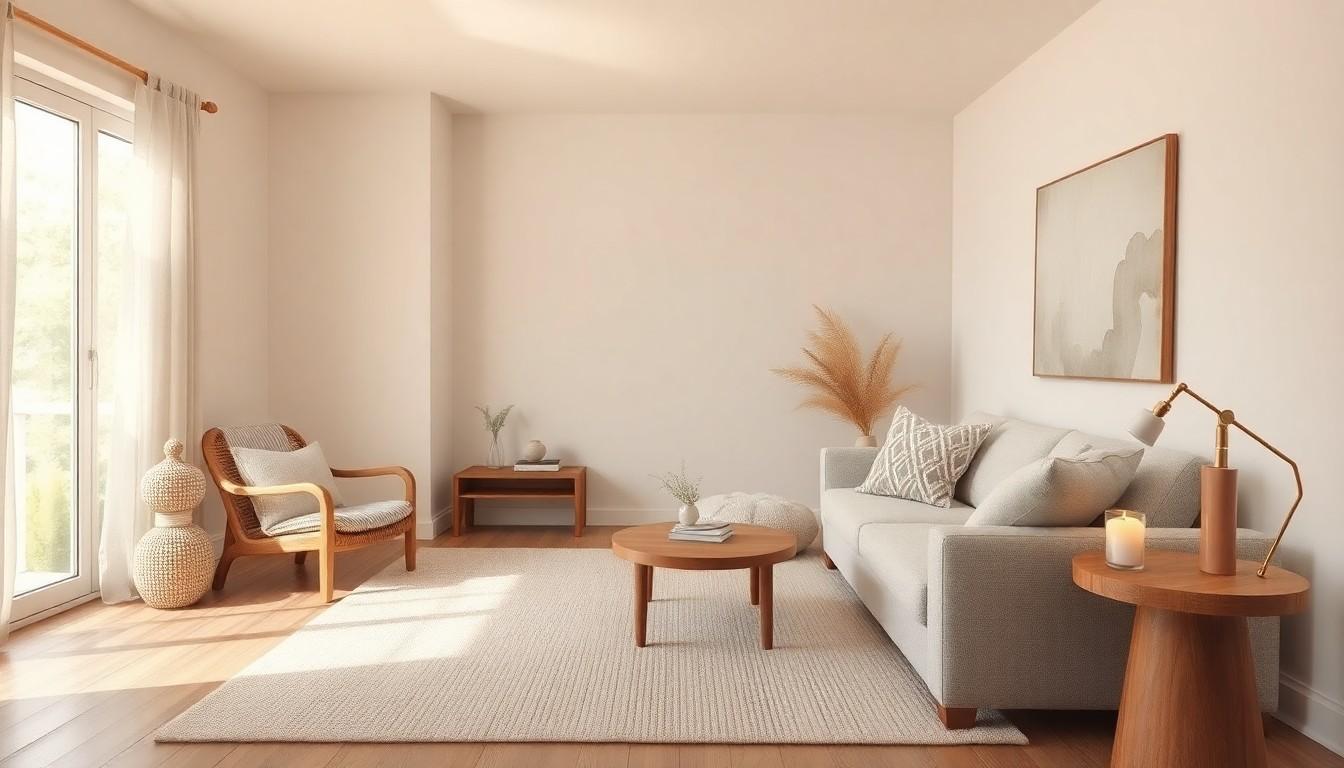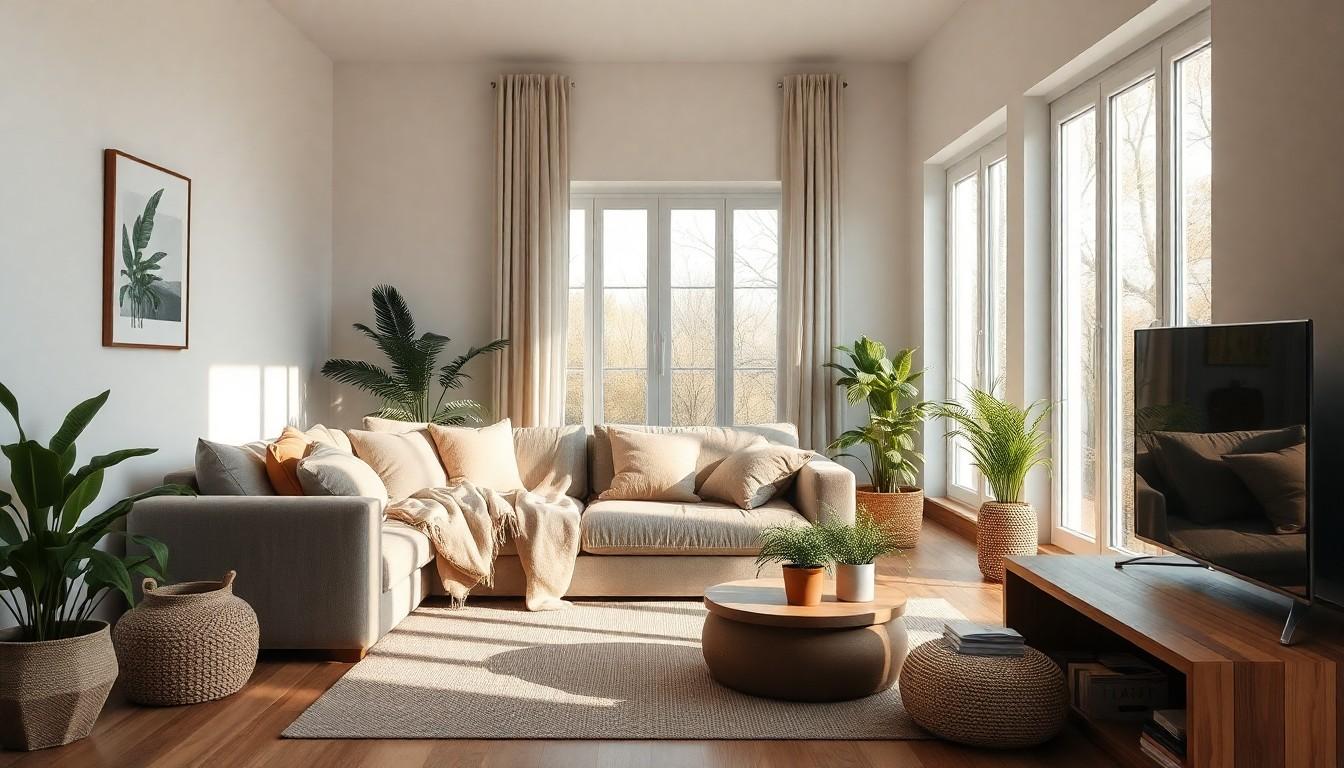Phone:
(701)814-6992
Physical address:
6296 Donnelly Plaza
Ratkeville, Bahamas.

In a world that often feels like a high-speed chase, slow living decor invites a refreshing pause. It’s not just about filling a space; it’s about creating a sanctuary where time slows down and relaxation reigns supreme. Imagine stepping into a home that whispers calmness, with cozy textures and earthy tones that make you want to kick off your shoes and stay awhile.
Slow living decor isn’t just a trend; it’s a lifestyle choice that encourages mindfulness and simplicity. By embracing natural materials and minimalistic designs, it transforms chaotic spaces into havens of tranquility. So why not swap that frenetic energy for a cozy nook that practically begs you to curl up with a good book? Dive into the world of slow living decor and discover how to turn your home into a peaceful retreat that even your over-caffeinated self can appreciate.
Slow living decor focuses on creating spaces that foster tranquility and mindfulness. This design approach emphasizes simplicity and deliberate choices. Individuals utilize natural materials, such as wood, stone, and organic textiles, to promote a calming atmosphere. They often select a neutral color palette, incorporating soft tones that enhance relaxation.
Minimalistic designs play a significant role in this decor style, encouraging clutter-free environments. Furnishings typically serve both aesthetic and functional purposes. Each piece reflects a thoughtful selection, inviting a sense of peace and comfort.
Lighting greatly influences the ambiance within these spaces. Natural light is prioritized, with large windows and sheer curtains providing illumination without harshness. Candles and soft lamps contribute warm and inviting glows.
Textures contribute richness and depth, enhancing the overall sensory experience. Cozy throws, plush cushions, and handmade rugs add warmth to living areas. These tactile elements create an inviting sanctuary that encourages individuals to unwind.
Embracing slow living decor also means prioritizing personal connections. Artworks and decor items are often chosen for their sentimental value or unique stories. Handmade pieces from local artisans add depth and character, celebrating craftsmanship.
This design philosophy encourages individuals to take their time and appreciate the beauty in everyday moments. By adopting slow living decor, one fosters an environment that nurtures relaxation and personal growth.

Slow living decor focuses on creating a serene and mindful home environment through intentional design choices. This approach emphasizes individual well-being, encouraging a slower pace of life.
Minimalism fosters a clutter-free environment that promotes peace and clarity. Each element in a space serves a specific purpose, enhancing both functionality and aesthetic appeal. The careful selection of furnishings reduces distractions, allowing individuals to focus on what truly matters. By opting for a few high-quality pieces, one cultivates an atmosphere that feels open and expansive. This simplicity invites calmness, making it easier to relax and recharge. A minimalist approach in slow living decor highlights the beauty of understated elegance and allows the mind to rest.
Natural materials play a crucial role in the slow living decor philosophy. Wood, stone, and organic textiles create a sense of connection to nature. Choosing furnishings crafted from these materials fosters an inviting and warm atmosphere, rich in texture and comfort. These elements invite warmth while also being sustainable, aligning with eco-friendly values. Incorporating a neutral color palette enhances relaxation and complements the organic textures found in natural materials. With handcrafted pieces, individuals can appreciate the uniqueness and stories behind each item, further enriching their living spaces.
Slow living decor offers various benefits that enhance home environments and personal well-being. This approach prioritizes tranquility and mindfulness, positively influencing one’s lifestyle.
Implementing slow living decor improves overall well-being. A calming atmosphere reduces stress and promotes relaxation. Natural materials like wood and stone contribute to a peaceful ambiance. Mindful decorating fosters a connection to one’s surroundings, encouraging appreciation for simplicity. Incorporating personal artifacts, such as handmade pieces, enhances emotional satisfaction. Each thoughtfully selected item adds to the space’s serenity. This intentionality boosts mental clarity, allowing individuals to focus on essential aspects of life.
Slow living decor significantly impacts the environment. Choosing sustainable materials, such as organic textiles and natural fibers, supports eco-friendly practices. Minimalism reduces waste by promoting conscious consumption. Every piece selected is often built to last, decreasing the need for frequent replacements. Supporting local artisans fosters community sustainability and preserves craftsmanship. This design philosophy encourages mindful living and nurtures a deeper connection to nature. When individuals embrace slow living decor, they contribute to a healthier planet through their choices.
Incorporating slow living decor involves intentional choices that create serene and mindful spaces. Focus on color palettes and furniture that enhance tranquility.
Select a neutral color palette featuring soft tones like beige, gray, and pastel shades. Earthy hues evoke a sense of calm, promoting relaxation throughout the space. Avoid bright colors that can overwhelm the senses. Opt for matte finishes to maintain a soothing environment. Integrating natural colors reflects the simplicity of nature, connecting individuals with their surroundings. Consider accent colors as subtle highlights rather than dominant features. Painting walls in gentle shades creates an inviting atmosphere that encourages mindfulness.
Choose furniture made from natural materials such as wood, stone, or bamboo. Solid wood pieces provide durability and warmth, enhancing overall comfort. Keep furniture designs minimalistic, avoiding excessive ornamentation that creates clutter. Opt for multi-functional pieces that serve both aesthetic and practical purposes. Select soft, inviting fabrics for upholstery to contribute to a cozy and welcoming feel. Handcrafted items from local artisans add uniqueness and support sustainable practices. Prioritize comfort to ensure that each piece invites relaxation and reflection, aligning perfectly with the principles of slow living.
Slow living decor offers a transformative approach to home design that nurtures both the mind and spirit. By embracing natural materials and minimalistic aesthetics, individuals can create spaces that promote relaxation and mindfulness. The intentional selection of decor items fosters personal connections and enhances emotional well-being.
This design philosophy not only elevates home environments but also encourages sustainable practices that benefit the planet. As more people seek tranquility in their lives, slow living decor stands out as a meaningful way to cultivate serene spaces. Adopting this lifestyle can lead to a deeper appreciation for the beauty in everyday moments, ultimately enriching one’s quality of life.